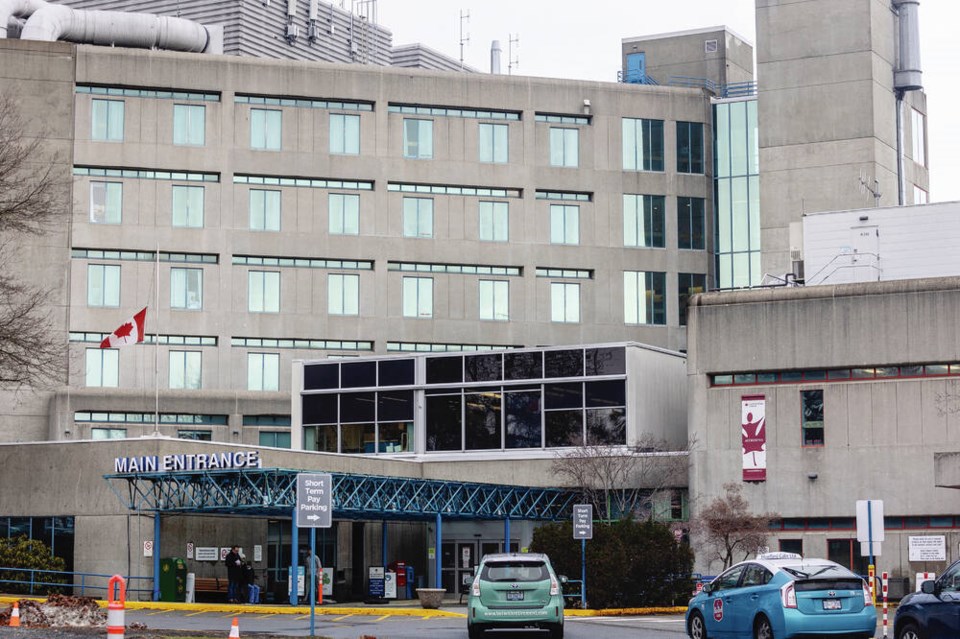Increasingly potent street drugs are driving some addicted patients to use their own drug stashes over traditional withdrawal medications while in hospital.
Dr. Ashley Heaslip, medical director for addiction medicine for Island Health, says use of highly concentrated illicit fentanyl in the community has made it tougher to find effective withdrawal medications that will keep patients in hospital for treatment.
“Unregulated fentanyl exposure has made it a little bit more tricky for us to balance clinically how to meet those tolerance levels with the traditional therapies that we have,” Heaslip said in a phone interview.
An Island Heath guidance document issued last month to acute-care hospital staff instructs nurses not to stop open use of illicit drugs in hospital rooms, and to even teach patients how to inject drugs into their IV lines — despite the fact government officials have said drug use is not permitted in hospitals.
Adriane Gear of the B.C. Nurses Union said while the union supports harm-reduction approaches, it opposes unfettered illicit drug use by patients in hospital rooms and prefers that patient withdrawal symptoms be managed with expanded used of opioid agonist medical treatments — as was more often the case in the past — or by offering supervised consumption and inhalation sites.
“I think there’s a compassionate way to deal with people, but it doesn’t mean that you get to just do what you want when you want to,” said Gear.
Heaslip said she can’t say what percentage of patients take prescribed medications for withdrawal as opposed to using their own street drugs while in hospital, but addictions teams are “extremely busy in the hospitals where they work” on the Island.
“We’re having to be really creative around looking at alternatives and putting all options on the table for patients when it comes to kind of evidence-based addiction medicine,” she said.
Addiction-medicine consult teams, staffed with physicians, nurses and often social workers, create care plans for patients that can include opioid agonist therapies or pharmaceutical alternatives or a combination of both.
Traditional agonist therapies include methadone, suboxone and kadian and can be accessed in hospital or through community prescribers. In recent years, an injectable version of suboxone, called sublocade, has also been used successfully.
Prescribed pharmaceutical alternatives can include hydromorphone, now available in injectable form.
“Many of the supply options for patients are higher concentrations than we were seeing prior to the public health emergency,” said Heaslip.
The toxic drug overdose crisis was declared a public health emergency in 2016 and since then, despite several provincial interventions, the number of deaths has risen to almost seven a day.
Heaslip said the goal is to create a treatment plan that will meet each patient’s needs, whatever their tolerance level or ailment. “It’s not as simple as just having one sort of medication or a couple of options that work for every person at the same dose.”
She said her goal is that every patient in Island Health has “the opportunity to have dignified and comprehensive care regardless of who we are.”
People have autonomy in their health-care decisions and regardless of their medical needs — be it diabetes, hypertension or addiction — they can’t be forced to take a prescribed path, Heaslip said.
The province has come under fire for some of its harm-reduction policies to deal with the overdose crisis, particularly a three-year pilot allowing people to carry small amounts of drugs for personal use, and a safer-supply program of prescription opioids, such as hydromorphone, as an alternative to potentially toxic fatal street drugs. Those safer-supply drugs, in some cases, have been diverted to criminals for sale.
But Heaslip said that in the midst of a toxic drug crisis, all options need to be on the table.
“I think anything that we can put on the table given the level of mortality and risk that we’re seeing for patients who are living in the middle of the toxic drug crisis, we need to be exploring.”
No matter what strategy is tried, however, it must include robust evaluation to identify challenges and mitigate potential risk, she said.
“There always needs to be a really solid evaluation put alongside them so that we understand the impacts that they’re having — not just for patients but for the broader community as well.”



